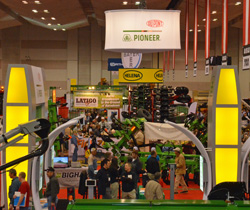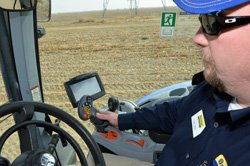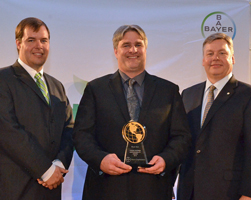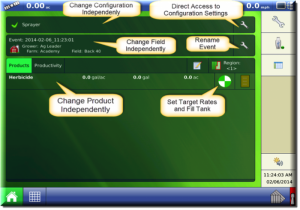 Attendance was up at this year’s Mid-South Farm & Gin Show. Tim Price, Executive Director of the Southern Cotton Ginners Association and Mid-South Farm & Gin Show Manager summed up the event with Chuck. He’s proud that farmers make plans to attend the show each year and make it a family affair.
Attendance was up at this year’s Mid-South Farm & Gin Show. Tim Price, Executive Director of the Southern Cotton Ginners Association and Mid-South Farm & Gin Show Manager summed up the event with Chuck. He’s proud that farmers make plans to attend the show each year and make it a family affair.
“We don’t have the exact number yet, but we were ahead of last year. We think we will come in somewhere around 18,000 folks who have visited the show over the two-day time period. We always compete with the end of winter and the beginning of the planting season. Here in the south there are people fertilizing winter wheat now. They are anxious after this long winter to get out in the fields and begin tillage and a number of them have. But we find that they carve out time for this.”
Tim gives credit of the record attendance to good marketing and unprecedented years of profitability in American agriculture. He stated that even when the economy is down, people still come out to the show. They are seeking ideas to increase profits and ways to change in order to keep up with technology.
“This region of the country has the assets and the climate to really grow multiple crops. That’s an advantage. In my work representing the cotton ginning sector in the Mid-South, we love to see acreage, we love to see cotton production, we love to see cotton gins. But it’s not economically in the farmers best interest some years. What we have learned is that they are learning constantly how to adjust and adapt to what has really been a decade old process of going toward a market orientation and then an international orientation of our production.”
You can listen to Chuck’s interview with Tim here: [wpaudio url=”http://zimmcomm.biz/farm-gin-show/gin-show-14-price-wrap-up.mp3″ text=”Interview with Tim Price”]









 Bayer CropScience has honored
Bayer CropScience has honored  This February, Ag Leader released the latest firmware of 5.2. There are a lot of updates and improvements in the latest firmware and no matter your operation, there will be a feature you will enjoy! The first thing that you will notice about 5.2 is the home screen has changed. It has a green backdrop, but that is just the beginning! There are added tabs that make adjusting the operation more convenient. Growers can now change operators, configurations, fields, products, and rates, straight from the home screen. Also, you can access the grower/farm/field and configuration settings by selecting the wrench next to the tabs.
This February, Ag Leader released the latest firmware of 5.2. There are a lot of updates and improvements in the latest firmware and no matter your operation, there will be a feature you will enjoy! The first thing that you will notice about 5.2 is the home screen has changed. It has a green backdrop, but that is just the beginning! There are added tabs that make adjusting the operation more convenient. Growers can now change operators, configurations, fields, products, and rates, straight from the home screen. Also, you can access the grower/farm/field and configuration settings by selecting the wrench next to the tabs. 
